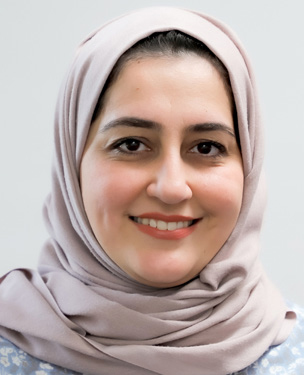FST JOURNAL
The Skills Gap
DOI: https://www.doi.org/10.53289/OJUO9791
Living in a digital world
Sharmen Ibrahim

Sharmen Ibrahim is Group Director of Digital Education at Activate Learning Group. She has led digital education provision for the group since 2017 and has been working closely with curriculum colleagues to ensure the implementation of a digital strategy across the group. This includes the contextualisation of digital competencies across different curriculum areas.
With a background in Higher Education, my introduction to the concept of Further Education and vocational training came when I relocated to the United Kingdom in 2015. In my home country, the educational path typically involved finishing school and proceeding directly to university or seeking employment. However, upon completing my engineering degree, I realised that while I had acquired a significant amount of knowledge, I lacked certain essential skills required to fully utilise that knowledge in a professional setting.
Although I possessed the necessary technical expertise to contribute to meetings and discussions, I struggled when it came to creating engaging presentations for my audience. Through my experience with vocational learning, I recognised that learners entering the job market require more than just technical knowledge. Employers seek qualities such as resilience, social skills, and motivation too.
At Activate Learning, we have developed a comprehensive digital strategy that encompasses various key drivers. Technology is an evident aspect, but our learning philosophy extends beyond that. We incorporate neuroscience principles through the utilisation of digital applications and we place a strong emphasis on leveraging digital tools for student wellbeing. Our aim is to equip our students with the skills necessary to become global citizens who can effectively communicate digitally and collaborate with others. Furthermore, recognising the growing importance of sustainability to younger generations, we integrate sustainability education into our digital strategy as well.
The framework
The development of the digital skills strategy really started in 2017 and it has gone through a number of iterations. First, we tried to deliver it as a standalone subject called digital skills, and then we included it in our enrichment programme. Now, it is an integral part of the curriculum.
We launched our digital competencies framework in March 2022. We introduced it to staff in April and had everybody trained on the ‘6 Cs’ as we call them: creation, collaboration, connection, curation, communication and critical thinking. Our goal then was to establish a baseline for our staff and students so that they all knew where they were and how they could improve those digital competencies.
Digital diagnostics
We have built a digital competencies diagnostic assessment tool that possesses unique capabilities. What sets this diagnostic apart is its ability to guide users along different pathways based on their individual levels and aptitudes. Recognising that a one-size-fits-all approach is ineffective, our tool creates personalised profiles for each student and staff member.
At the start of the academic year, we start with Connect to College Week, or ‘week zero’. During this time, no formal teaching takes place. Instead, we introduce students to various elements of college life. This includes familiarising them with their chosen vocational areas as well as introducing the concept of the six competencies. We also touch upon important topics such as online safety and safeguarding, which are crucial considerations for students of 16 years of age.
We then start contextualising digital competencies. To give an example, I went into a construction classroom and I asked a student there: “What do you want to learn?” “I just want to learn how to lay bricks,” was the reply. I then said, “And what do you want to do when you finish?” “Oh, I'll have my own business.”
So I then explained that to set up a business, they would need digital skills. They would need digital skills to manage employees, interact with customers, complete accounts. The penny dropped, they realised they needed this. But sometimes at 16, it is really hard to get that point. So we have to equip our staff with the skills to demonstrate to students why they need these digital competencies.
In November 2022, we went through an inspection by Ofsted. One of the inspectors expressed particular interest in our digital strategy, seeking evidence of its integration, how students were assessed against it, and the demonstrable impact it had. From the perspective of Ofsted, we had a novel aspect.
Our promotion of digital literacy extends across diverse areas of study. Our digital strategy permeates many other disciplines. We teach students how to visualise their ideas and products in two and three dimensions, employing technologies like 3D printing facilities available at our campuses. This practical approach allows them to design items and then witness their creations come to life.
The product we have developed is versatile and encompasses a wide range of features. It offers students a diagnostic assessment that guides them into personalised pathways. We have also devised pathways for staff, taking a pedagogical approach. The structure incorporates a matrix consisting of six competencies, each comprising four attainment levels.
This undertaking has required a significant amount of effort, with approximately 1500 activity cards tailored to different levels and subject areas. We provide digital clubs and cater to the specific needs of our high-need learners through differentiated approaches. Recently, we introduced programmable LEGO sets, allowing our high-need learners to engage with digital concepts effectively.
With this system, each teacher gets a toolkit; they can apply the contextualised digital inputs in their own subject areas. Students like it because it makes sense to them. For example, a student who is studying access to nursing can use it to understand the secure management of patient records. Ultimately, we are able to offer our students and staff a comprehensive tool that helps them make sense of our digital world and show how it is meaningful for them.
